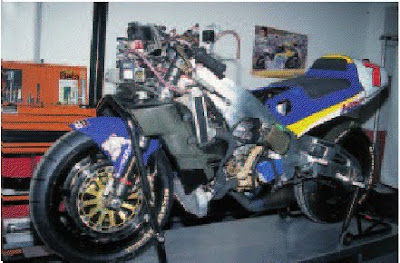
Oil reservoir access alloy. The aquisition data of the bike was by 2D German corporation. I would like to mention Mr. Zep Gori as technical assistant of Pileri Team racing at the time of the investigation of bikejournalist about the 500 HRC machine in details. Mario Galeotti was the director of team in 1996.

This is the end of our small conversation about this dream past bike. For what concern my opinion, collecting infos on this kind of machines is very difficult, but I was so lucky to find a person who helped me on this strange case. A big thanks to Nicola for his collaboration, and Goodbye to other monographies.
THE END










